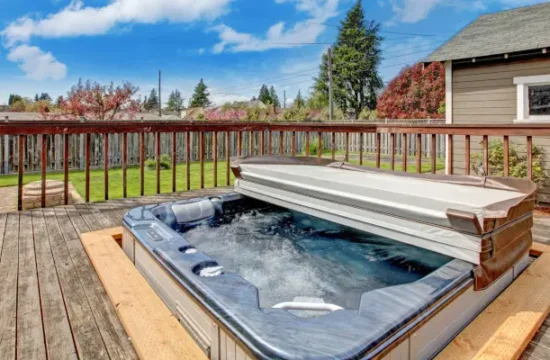Secondary glazing is an effective solution for homeowners looking to improve energy efficiency and sound insulation in their properties. As energy prices continue to rise, finding ways to reduce heating costs has become essential. Secondary glazing involves adding a second layer of glass or acrylic to existing windows, creating an insulating barrier that helps maintain indoor temperatures. This added layer not only enhances energy efficiency but also minimizes outside noise, making your home a more peaceful retreat. Understanding the importance of secondary glazing can lead to significant benefits, including comfort, reduced energy bills, and increased property value. In this article, we’ll explore what secondary glazing is, how it works, its benefits, and other key considerations for homeowners thinking about this upgrade.
What is Secondary Glazing?
Secondary glazing refers to the installation of an additional pane of glass or clear acrylic over an existing window. This process creates an insulating air gap between the two layers, which helps reduce heat loss and improve energy efficiency. Unlike double glazing, which involves replacing old windows with new ones that have two panes of glass, secondary glazing is a less invasive and often more cost-effective option. It can be fitted to most existing windows without requiring a complete replacement. The main goal is to provide an extra barrier that not only insulates against heat loss but also helps keep external noise at bay. Understanding this distinction is crucial for homeowners considering their options for window improvements.
How Secondary Glazing Works
Secondary glazing works by creating a sealed air space between the existing window and the new glazing unit. When installed correctly, this space acts as an insulating barrier, reducing the amount of heat that escapes during the colder months and keeping cool air inside during the summer. The installation process typically involves using various types of frames, such as aluminum, wood, or plastic, to hold the secondary pane in place. There are several systems available, including fixed, hinged, and sliding options, each suited to different window types and preferences. By preventing drafts and minimizing heat transfer, secondary glazing helps maintain a comfortable indoor environment while lowering energy consumption.
Benefits of Secondary Glazing
One of the primary benefits of Secondary glazing is its ability to enhance energy efficiency. By reducing heat loss, homeowners can save significantly on their energy bills, especially during colder months when heating costs can be high. Additionally, secondary glazing acts as a sound barrier, making it an excellent choice for those living in noisy areas. It can reduce noise pollution from traffic, construction, or other disturbances, leading to a more tranquil living space. Another advantage is condensation control; by improving temperature regulation, secondary glazing helps prevent condensation from forming on windows, which can lead to mold growth. Overall, the benefits of secondary glazing extend beyond just comfort; they contribute to a more sustainable and cost-effective living environment.
Cost Considerations
When considering secondary glazing, it’s important to evaluate the costs involved. Installation costs can vary widely depending on factors such as the type of system chosen, the size of the windows, and whether the installation is done professionally or as a DIY project. While the upfront cost may seem significant, the long-term savings on energy bills can quickly offset this initial investment. Moreover, many homeowners find that the added comfort and reduced noise make the expense worthwhile. In some cases, local governments or utility companies may offer incentives or rebates for energy-efficient home improvements, which can further reduce the overall cost. Understanding these financial aspects can help homeowners make an informed decision about whether secondary glazing is a viable option for their homes.
DIY vs. Professional Installation
One of the decisions homeowners face when considering secondary glazing is whether to tackle the installation themselves or hire a professional. DIY installation can save money, but it requires careful measurement and a certain level of skill to ensure a proper fit and seal. For those who are handy and willing to invest the time, it can be a rewarding project. However, hiring a professional is often advisable for more complex windows or if you’re unsure about the process. Professionals bring experience and expertise, ensuring that the installation is done correctly and efficiently. They can also provide valuable advice on the best type of secondary glazing system for your specific needs. Weighing the pros and cons of both options is essential to achieving the best results.
Maintenance of Secondary Glazing
Maintaining secondary glazing is relatively straightforward and involves regular cleaning and occasional checks for any signs of wear or damage. Most systems can be cleaned just like regular windows, using a soft cloth and mild detergent to avoid scratching the glass. It’s also important to inspect the seals around the glazing to ensure they remain intact; damaged seals can compromise the insulating properties of the unit. If any issues arise, such as condensation forming between the panes, it may indicate a problem that requires professional attention. Regular maintenance not only keeps the glazing looking good but also ensures it continues to perform effectively, providing ongoing benefits in energy efficiency and noise reduction.
Conclusion
In conclusion, secondary glazing presents numerous advantages for homeowners looking to improve their living environment. From enhanced energy efficiency and significant savings on heating bills to better soundproofing and increased comfort, the benefits are substantial. As energy costs continue to rise, investing in secondary glazing can be a smart choice that pays off in the long run. Whether you decide to install it yourself or seek professional help, understanding the ins and outs of secondary glazing can empower you to make informed decisions for your home. If you’re considering home improvements, secondary glazing is certainly worth exploring.











